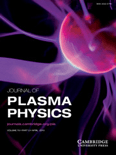
JOURNAL OF PLASMA PHYSICS
Scope & Guideline
Catalyzing innovation in plasma science.
Introduction
Aims and Scopes
- Plasma Dynamics and Stability:
Research on the behavior and stability of plasmas under various conditions, including the study of instabilities, turbulence, and the effects of magnetic fields. - Magnetohydrodynamics (MHD):
Exploration of MHD phenomena, including equilibrium, stability, and dynamics, particularly in fusion devices and astrophysical contexts. - Kinetic and Fluid Models:
Development and application of kinetic and fluid models to describe plasma behavior, including gyrokinetic simulations and fluid dynamics. - Plasma Diagnostics:
Innovations in diagnostic techniques for measuring plasma parameters, including particle and energy transport, and the development of new experimental setups. - Applications of Plasma Physics:
Studies focusing on practical applications of plasma physics, such as in fusion energy, space physics, and materials processing. - Data-Driven Approaches and Machine Learning:
Use of machine learning and data-driven methods to enhance plasma modeling, simulation, and experimental analysis. - Nonlinear Plasma Physics:
Investigation of nonlinear phenomena in plasmas, including wave-particle interactions, turbulence, and self-organization.
Trending and Emerging
- Fusion Plasma Research:
An increasing number of studies are focusing on plasma behavior in fusion devices, particularly in tokamaks and stellarators, driven by the global push for viable fusion energy. - Machine Learning in Plasma Physics:
There is a growing trend towards utilizing machine learning techniques for data analysis, modeling, and simulation in plasma physics, enhancing predictive capabilities. - Multiscale and Multi-Physics Approaches:
Research that combines various scales and physical phenomena, such as coupling kinetic and fluid models, is becoming more prominent, reflecting the complexity of plasma systems. - Advanced Plasma Diagnostics:
New diagnostic techniques, including advanced imaging and spectroscopic methods, are being developed to provide deeper insights into plasma behavior and interactions. - Nonlinear Wave Dynamics:
Studies on nonlinear waves, including solitons and rogue waves in plasmas, are gaining traction, indicating a shift towards understanding complex wave phenomena. - Plasma-Material Interactions:
Research on the interactions between plasmas and materials, especially in the context of fusion reactors and surface engineering, is increasingly recognized for its importance.
Declining or Waning
- Classical Plasma Theory:
Traditional approaches to plasma theory, particularly those based solely on classical mechanics without incorporating modern computational or experimental advancements, are becoming less prevalent. - Dusty Plasma Research:
Although still relevant, the frequency of studies specifically focusing on dusty plasma phenomena has declined, possibly due to a shift towards more complex plasma systems. - Static Models of Plasma Behavior:
Research that relies on static or equilibrium models without considering dynamic or time-dependent behaviors is being phased out in favor of more comprehensive approaches. - Basic Experimental Techniques:
Studies relying on older or less sophisticated experimental techniques are declining as new technologies and methodologies emerge. - Low-Temperature Plasma Physics:
Research on low-temperature plasmas is less frequently published compared to high-energy-density plasmas and fusion-related studies, indicating a potential shift in research priorities.
Similar Journals
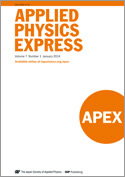
Applied Physics Express
Delivering Cutting-Edge Research at Light SpeedApplied Physics Express, published by IOP Publishing Ltd, is a leading journal that focuses on the rapid dissemination of research in applied physics, aimed at both academia and industry professionals. Operating from Japan, this prestigious journal features a broad scope within the domains of engineering and physics and astronomy, earning a significant place in the research community, as evidenced by its Q2 ranking in both disciplines for 2023. With a commitment to excellence, Applied Physics Express provides a platform for authors to share their innovative findings, promoting collaboration and advancement in the field. Its impact is further highlighted by its solid performance in Scopus rankings, featuring prominently within the engineering and physics categories. Although the journal does not currently operate under an open access model, it is dedicated to ensuring that high-quality research is accessible to its readers. Researchers, students, and professionals can find invaluable insights and cutting-edge studies within its pages, making it an essential resource for those engaged in applied physics and its interdisciplinary applications.
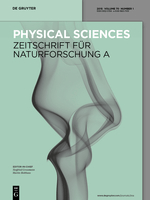
ZEITSCHRIFT FUR NATURFORSCHUNG SECTION A-A JOURNAL OF PHYSICAL SCIENCES
Fostering Knowledge in Physics and AstronomyZEITSCHRIFT FUR NATURFORSCHUNG SECTION A - A JOURNAL OF PHYSICAL SCIENCES is a distinguished journal published by Walter de Gruyter GmbH, based in Germany, that serves as a vital platform for research in the realms of mathematical physics, physical and theoretical chemistry, and broader disciplines within physics and astronomy. Established in 1946, this journal has been a cornerstone for scientists and researchers, providing rigorous peer-reviewed articles that push the boundaries of knowledge in physical sciences. With a notable 2023 Scopus ranking reflecting its respected position in the field—Q3 in mathematical physics, physical and theoretical chemistry, and miscellaneous physics and astronomy—this journal not only emphasizes high-quality research but also enhances the visibility and impact of contributions within these areas. Although it does not currently offer open access, the insights shared in its pages are invaluable for advancing academic inquiry and sparking interdisciplinary collaborations. As it looks ahead to 2024, ZEITSCHRIFT FUR NATURFORSCHUNG SECTION A continues to invite contributions that align with its mission to foster an understanding of complex physical phenomena, making it an essential resource for academics, professionals, and students alike.
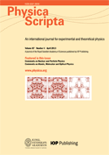
PHYSICA SCRIPTA
Pioneering Discoveries in Mathematical PhysicsPHYSICA SCRIPTA, established in 1970 and published by IOP Publishing Ltd, is a prestigious journal dedicated to the broad fields of physics, encompassing topics such as atomic and molecular physics, condensed matter physics, and mathematical physics. With an impressive commitment to advancing scientific knowledge, it holds a significant standing in the academic community, evidenced by its Q2 and Q3 rankings across various categories in 2023. The journal is instrumental for researchers, professionals, and students seeking to disseminate and engage with high-quality research, fostering collaboration and innovation within the field. Although it currently does not offer open access options, its robust editorial standards ensure the dissemination of impactful studies, contributing to its rising citation metrics. Published from the United Kingdom, PHYSICA SCRIPTA continues to be a vital resource for contemporary developments in physics, paving the way for future discoveries.

Physics
Innovating Knowledge: Your Gateway to Physics DiscoveriesPhysics, published by MDPI, is an open-access journal that commenced in 2019 and has quickly established itself as a significant contributor to the field of physics and astronomy. With a respectable impact factor and categorized in the Q2 quartile for 2023, this journal serves a broad spectrum of topics within the discipline, fostering innovative research and insights. As part of the MDPI portfolio, known for promoting high-quality, peer-reviewed research, Physics aims to provide a platform for scholars, professionals, and students to publish their findings and engage with contemporary debates in the field. The journal's accessibility, paired with its commitment to scientific excellence, ensures that research is readily available to a global audience, which is crucial for advancing knowledge and collaboration in physics. Located in the heart of Switzerland at ST ALBAN-ANLAGE 66, CH-4052 BASEL, the journal enjoys a position at the nexus of cutting-edge research and academia.

Plasma and Fusion Research
Leading the Charge in Global Plasma Research and DevelopmentPlasma and Fusion Research is a pivotal journal within the realm of plasma science and nuclear fusion, published by the Japan Society of Plasma Science and Nuclear Fusion Research. With an ISSN of 1880-6821, this journal serves as a vital platform for disseminating significant research findings and advancements from Japan and around the globe. Operating since 2006, it has steadily contributed to the field, reflected in its recognition as a Q3 journal in Condensed Matter Physics for the year 2023 and its ranking of #383 out of 434 in the Scopus categories, placing it in the 11th percentile. Although it currently does not offer open access, the journal's commitment to quality research makes it essential reading for researchers, professionals, and students keen on exploring the complexities of plasma dynamics, fusion technology, and their applications in energy production. Situated in Nagoya, Japan, the journal fosters a collaborative environment aimed at pushing the boundaries of knowledge in plasma physics and enhancing the understanding of fusion processes.

CONTRIBUTIONS TO PLASMA PHYSICS
Unveiling the Dynamics of Plasma PhysicsCONTRIBUTIONS TO PLASMA PHYSICS is a distinguished journal dedicated to advancing the field of plasma physics, published by WILEY-V C H VERLAG GMBH. Since its inception in 1988, this journal has provided a platform for high-quality research, fostering collaboration and dissemination of knowledge in the condensed matter physics domain. With its current ranking of Q3 in the 2023 assessments, the journal is recognized for its contributions to the discipline, as indicated by its position in the Scopus rankings (Rank #252/434) and 42nd percentile within its category. Researchers and professionals engaged in plasma physics are encouraged to submit their work, as the journal aims to publish innovative studies that push the boundaries of current understanding and application in plasma phenomena. While currently not offering open access, the journal remains a vital resource for insights into the complexities and advancements in plasma research, operating from its base in Germany.

PLASMA SCIENCE & TECHNOLOGY
Pioneering Insights in Condensed Matter PhysicsPLASMA SCIENCE & TECHNOLOGY is a distinguished academic journal published by IOP Publishing Ltd, focusing on the realm of condensed matter physics. With its inception in 2000 and continuing through 2024, the journal serves as a vital platform for disseminating groundbreaking research and developments in plasma science, encompassing experimental and theoretical studies that advance our understanding of plasma behavior and its applications. Although the journal is not open access, its insights are invaluable for researchers, professionals, and students devoted to the intricate physics of plasmas, particularly given its respectable Q2 quartile ranking within its category as of 2023 and a notable Scopus rank that places it within the 44th percentile among its peers. Published from the United Kingdom, the journal aims to foster collaboration and innovation in this essential field of study.
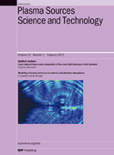
PLASMA SOURCES SCIENCE & TECHNOLOGY
Elevating Plasma Science to New Heights of Innovation.PLASMA SOURCES SCIENCE & TECHNOLOGY is a premier academic journal published by IOP Publishing Ltd, focusing on the innovative field of plasma science and its applications in technology. Established in 1992, the journal has significantly contributed to advancing knowledge in this crucial area, maintaining a robust Q1 quartile ranking in Condensed Matter Physics as of 2023, which reflects its high-impact research dissemination. With an impressive Scopus ranking of 74 out of 434 in the field of Physics and Astronomy—specifically within Condensed Matter Physics—this journal stands out as a leading source for researchers and professionals dedicated to the study and application of plasma technologies. While it is not an Open Access journal, the published works are accessible through institutional subscriptions, making them available to a wide academic audience. The journal aims to provide a platform for significant contributions related to plasma physics, fostering scientific dialogue and collaboration across various disciplines. As it continues through its converged years up to 2024, PLASMA SOURCES SCIENCE & TECHNOLOGY remains essential for anyone involved in the burgeoning exploration of plasma-related scientific advancements.
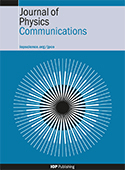
Journal of Physics Communications
Exploring New Frontiers in Physics CommunicationsJournal of Physics Communications, published by IOP Publishing Ltd, serves as a significant platform for the dissemination of innovative research in the realm of physics and astronomy. Since its inception in 2017, this Open Access journal has fostered a collaborative environment, allowing researchers, professionals, and students to share their findings and ideas without barriers. With an ISSN of 2399-6528, the journal has established its credibility in the academic community, achieving a ranking of Q3 in the 2023 category of Physics and Astronomy (miscellaneous), as well as a respectable position in Scopus with a rank of #122 out of 243 in its field. The journal's focus is on bridging theoretical concepts and practical applications, making it an essential resource for those engaged in the evolving landscape of physics. The Journal of Physics Communications not only aims to advance knowledge but also to inspire interdisciplinary collaboration, inviting contributions from diverse areas within physics. Authors and readers alike will find this journal particularly beneficial to stay updated on emerging trends and innovative research.

JOURNAL OF THE KOREAN PHYSICAL SOCIETY
Exploring New Horizons in Physics and AstronomyJOURNAL OF THE KOREAN PHYSICAL SOCIETY is a prominent academic journal dedicated to advancing the field of physics, published by the prestigious Korean Physical Society. With its extensive contribution to the scientific community since its inception in 1996, this journal serves as an essential platform for the dissemination of innovative research findings in various branches of physical science. Despite its current categorization in Q4 and a ranking reflecting its early-stage impact relative to peers, it remains a valuable resource for researchers, professionals, and students eager to explore developments in general physics and astronomy. The journal is accessible in both print and electronic formats, making it convenient for a global audience. Each issue aims to foster collaboration and knowledge-sharing within the field, ensuring that it remains relevant and instrumental in shaping future research directions. Located in South Korea, the journal continues to nurture a vibrant academic community, contributing to the ongoing dialogue in the global scientific arena.